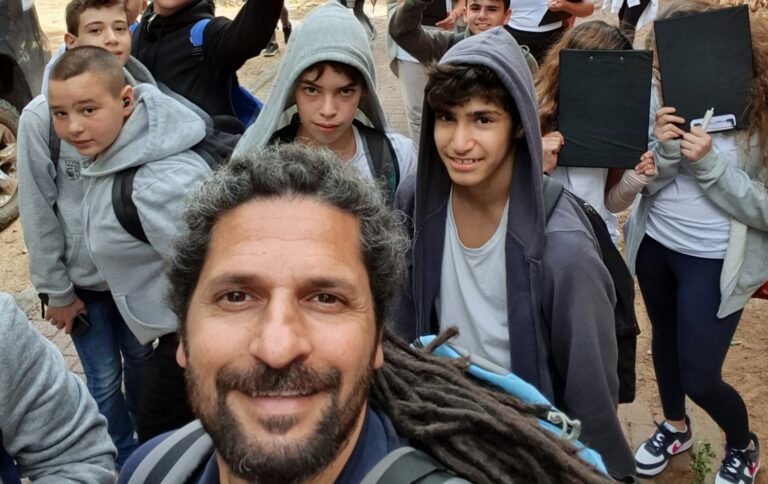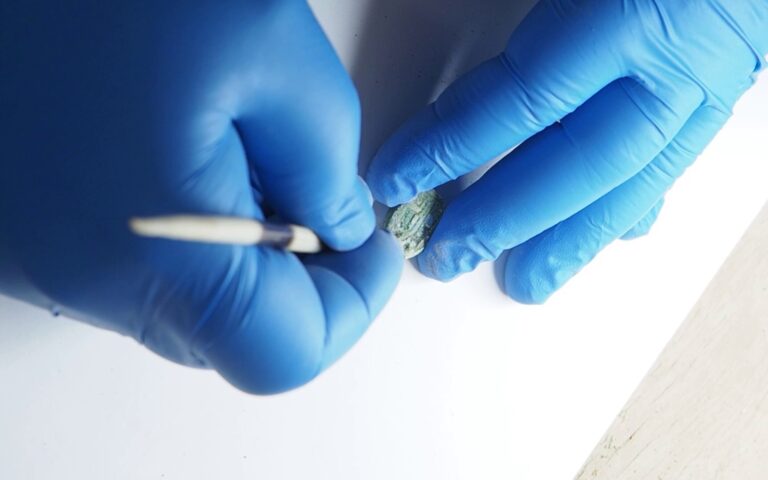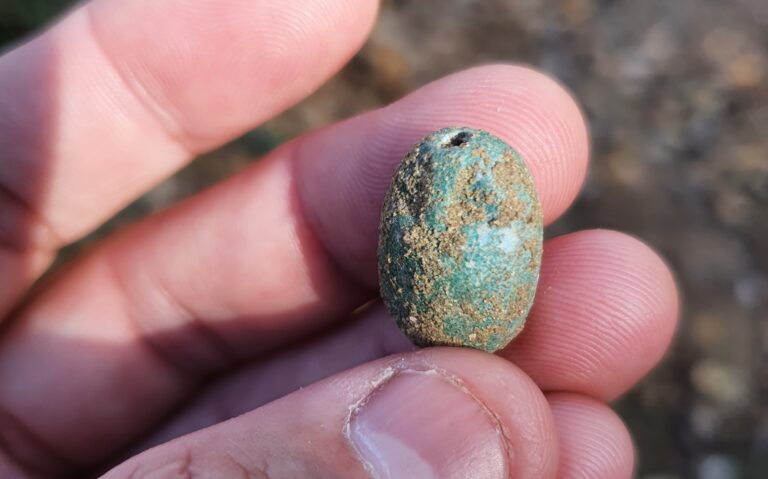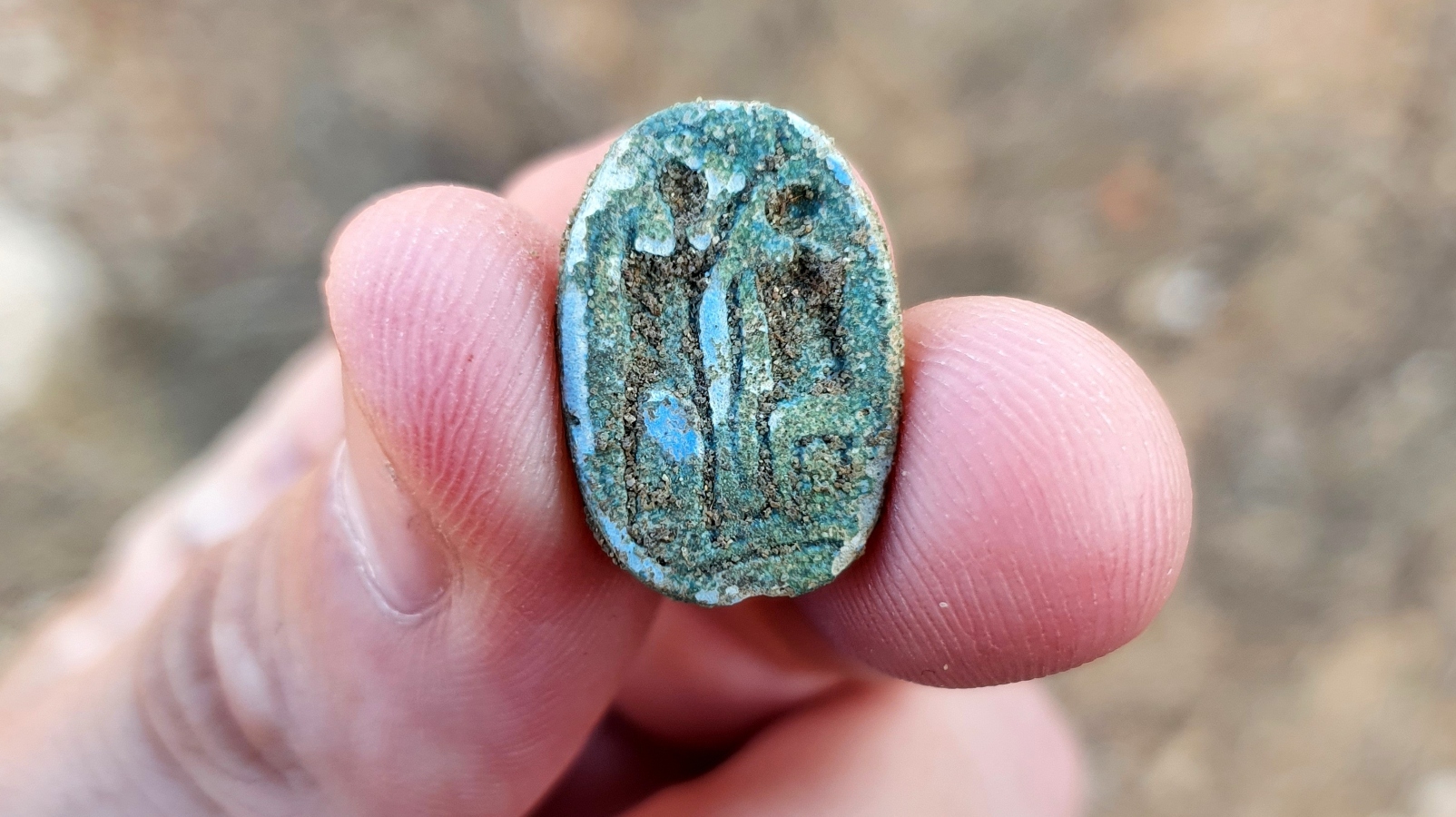Joining the ever-growing list of Israelis who uncover terrific archeological finds while out and about are eighth graders whose guide stumbled across a 3,000-year-old scarab depicting the bestowal of legitimacy on a (then) new local leader.
The students from Azor, just outside of Tel Aviv, were participating in a tour guide course that’s training them to teach local residents about the area’s archeological heritage. And their own guide was suddenly struck by an unusual sight.
“We were wandering around when I saw something that looked like a small toy on the ground,” recalls Gilad Stern of the Israel Antiquities Authority Educational Center, who was leading the tour. “An inner voice said to me: ‘Pick it up and turn it over.’

“I was astonished: It was a scarab with a clearly incised scene, the dream of every amateur archeologist. The kids were really excited!”
The scarab, designed in the shape of a dung beetle, probably hails from the Late Bronze Age dating back to 1500-1000 BCE.
“The scarab was used as a seal and was a symbol of power and status. It may have been placed on a necklace or a ring. It is made of faience, a silicate material coated with a bluish-green glaze,” explains IAA Bronze Age specialist Amir Golani.
“It may have dropped from the hands of an important figure of authority who passed through the area, or it may have been deliberately buried in the ground along with other objects, and after thousands of years it came to the surface. It’s difficult to determine the exact original context.”

The scarab is inscribed with a scene which is believed to portray the bestowal of legitimacy on a new ruler. It shows a figure sitting in front a standing figure who is raising his arm over the seated one. The standing figure has an elongated head, which might represent the crown of an Egyptian pharaoh.
“This scene basically reflects the geopolitical reality that prevailed in the land of Canaan during the Late Bronze Age (ca. 1500-1000 BCE), when the local Canaanite rulers lived (and sometimes rebelled) under Egyptian political and cultural hegemony,” says Golani.
“Therefore, it is very possible that the seal is indeed from the Late Bronze Age, when the local Canaanites were ruled by the Egyptian Empire,” he notes.
It appears that the scarab was made by local craftsmen, as the level of workmanship is not typical for Egypt. Out of the hundreds of scarabs found in Israel, some were imported from Egypt while many more were created by local artisans under Egyptian influence.

“The find of the scarab in the framework of a field tour with pupils participating in the tour guide course is symbolic, in that the pupils were gaining archeological knowledge and at the same time contributing to our archeological heritage,” says IAA Director Eli Escosido.
“This cooperation is truly moving, as we are working towards connecting communities with their cultural heritage.”

















